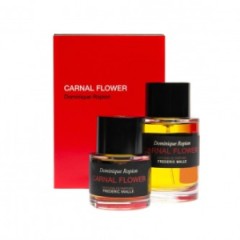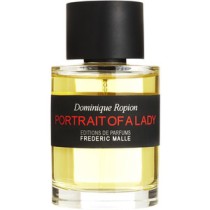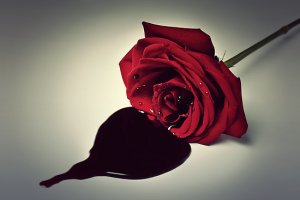There is a new Reuters article on what is going to happen with EU perfume regulation, and I found it interesting for reasons other than the usual repetition of how oakmoss is going to be banned. What is significant about the piece to me is what certain perfume houses said bluntly, what others did not, and the tonal shift amongst some industry leaders. So, I’m going to spend some time analyzing how various perfume brands are reacting to the EU proposals, now versus the past. In terms of actual regulatory news, the Reuters article talks a little about the small 90-day window for public consultation which just ended on May 14th, and the next steps in the legislative process. I’ll cover that, too.
BACKGROUND:
Let’s start with some background if you’re unfamiliar with the convoluted details of the EU situation. As noted in my prior piece on perfume regulation, a 2012 Advisory Committee had offered certain draconian suggestions to the EU regulatory body on widespread restrictions of 12 ingredients. These were mere suggestions, but, as noted in a 2013 post I wrote, it had already led the perfume industry to begin changes to formulas of existing perfumes. To bring you up to date on the current situation, and to put it in a nutshell, the EU is currently:
- planning on completely banning oakmoss, tree moss, and HICC, a synthetic that replicates the smell of lily of the valley (or muguet).
- deliberating on how much 9 other key, very essential ingredients should be restricted and to what levels they should be limited. As the new Reuters article explains, these other ingredients include citral, found in lemon and tangerine oils; coumarin, found in tropical tonka beans; and eugenol, found in rose oil.”
- deliberating on what sort of perfume labeling should be required.
Now, all of this is the exact same situation we faced when I wrote my earlier piece back in February of this year, but part of what the new Reuters article talks about is the public reaction to those proposals and the results of the consultation window where the EU sought opinion from those in the industry and its citizens. The article is called “Perfume industry braces for tough new EU rules” and was written by Astrid Wendlandt and Pascale Denis. It also talks about what the next steps in this process will be, but I found it interesting primarily for what I think it reveals about the various perfume companies and industry leaders, like Frederic Malle, Chanel, and LVMH.
THE PERFUME INDUSTRY RESPONSE:
My favorite quote from Monsieur Malle in the new article pertains to the EU’s plans to restrict citral, though to what level we do not yet know:
“If we ban citral from perfumes, of which certain elements are allergens, we should ban orange juice. It is absurd. We should not ban nature, only learn how to live with it,” said Frederic Malle, who founded the French luxury perfume company Editions de Parfums Frederic Malle. [Emphasis added.]
Monsieur Malle also informed the reporters that he is already reformulating his fragrances:
Frederic Malle said he was forced to reformulate about a quarter of his scents due to the upcoming EU regulations, leading to extra costs – but costs which he found difficult to quantify as they also represented time invested to rework the formulas.
“It can take more than six months to reformulate a perfume, and a minimum of some 30 tests … and this is precious time that cannot be spent on creating new perfumes. So to protect a small portion of the population, we are making the rest suffer,” he said.
Note how very candid, blunt, and frustrated his comments are, and then compare them to the very gingerly worded, rather generic e-mail statements issued by Chanel and LVMH in the article. Chanel is quoted on the issue of the oakmoss ban which is going to severely impact several of its most famous fragrances, particularly Chanel No. 5. In talking about the oakmoss ban, the article states:
Such mosses could be found in Chanel’s No.5 and Dior’s Miss Dior but the brands have been working on using altered versions, stripped of the molecules atranol and chloroatranol, regarded as potential allergens by the EU.
“Adapting is a challenge but it is precisely the talent of our “nose” to be able to preserve the qualities and olfactive (scent) identity of our perfumes while also taking into account new regulatory constraints,” Chanel said in an e-mailed statement.
That’s all Chanel seems to be willing to say on the record, which is consistent with prior articles where they have either refused to comment entirely, or the reporters have implied that Chanel doesn’t want to talk about what it’s doing to its perfumes in response to the EU situation.
As for the other luxury companies, the Reuters piece only had this to say:
Hermes as well as Dior and Guerlain – [the latter 2] both owned by LVMH – have also been preparing themselves for the new rules by progressively changing their formulas.
“The European Commission approach guarantees the security of consumers and preserves Europe’s olfactive heritage,” LVMH said in an e-mailed statement. Hermes, Dior and Guerlain declined to comment. [Emphasis to names added by me.]

Mitsouko, a LVMH fragrance from Guerlain that has already been impacted badly by EU/IFRA regulations. Photo source: Guerlain.com
LVMH’s comments demonstrate a distinct change in tone, if you ask me. Back in the earlier Reuters article that was the focus of my January 1, 2013 post on the widespread split in the industry, the journalists said this:
LVMH, which owns Dior and Guerlain, and Chanel are lobbying Brussels to protect their perfumes, many of which were created decades ago.
“It is essential to preserve Europe’s olfactory cultural heritage,” LVMH told Reuters in an emailed statement.
What a difference. Before, we had an industry leader demonstrating a willingness to fight and telling journalists that it was lobbying Brussels in order “to preserve Europe’s olfactory cultural heritage” against the proposed EU regulations. Now, we now have the exact same company saying that it is the European Commission’s approach which “preserves Europe’s olfactive heritage.” There is a night and day difference between those two LVMH statements.
My guess is that companies do not want to appear to be working against regulations that have been presented as protecting consumers. You and I know that the EU regulations are based on iffy science and the mere possibility that some tiny, minute portion of the population may perhaps, one day, maybe, hypothetically get a skin rash — but the general public does not. The way all of this is being presented on the surface is that the EU is kindly and benignly working in the public good. Companies may not want to risk the negative PR from appearing to be against regulations that are ostensibly intended to protect consumers. In truth, their fears aren’t wholly illogical. It’s not impossible to imagine tabloid headlines from ragsheets like the Daily Mirror or News of the World screaming, “Greedy Chanel wants to keep its massive perfume profits from Chanel No. 5 even if it makes consumers sick!”
I think that is the only explanation for why some brands refuse to publicly discuss the EU changes at all. Consider Chanel’s bland statement on how its noses are talented enough to compensate for the total oakmoss ban in its most famous fragrances, and then compare it with Frederic Malle’s outraged bluntness on the complete idiocy of the situation. Do you think Frederic Malle doesn’t have the most talented noses who could also deal with the oakmoss situation? He does, but he’s willing to publicly stand up for the perfume makers in this battle perhaps because his company is not a multi-national conglomerate that puts out everything from skin care to fashion and expensive diamond jewellery.
His business is limited primarily to perfume, so he is in a much more life-and-death struggle. And he’s said so, bluntly. Back in that earlier Reuters piece which I keep talking about, Malle said:
“If this law goes ahead I am finished, as my perfumes are all filled with these ingredients,” said Frederic Malle…. The impact on luxury perfume brands as a whole would, he said, be “like an atomic explosion and we would not have the means to rebuild ourselves.”
Here, in the current 2014 Reuters article, Malle talks candidly about how he is already reformulating his fragrances. Contrast that to what Chanel and others had to say in the earlier Reuters article:
Chanel declined to comment on whether it has ever changed the formula of its world-famous perfume, as did Guerlain, Dior and luxury brand Hermes, which all make high-end perfumes using natural ingredients.
“No comment” in this context pretty much speaks volumes, if you ask me.
I’ve seen the same divide in article after article. Frederic Malle is consistently the most blunt and critical; LVMH (owner of Guerlain and Dior) is never critical but is usually quite direct about its views of the EU regulations; Chanel sometimes makes a rare, always bland statement that never attacks IFRA or the EU, and is never about anything of any significance whatsoever; and Hermès lets the other luxury manufacturers fight its battles.
In the meantime, L’Oreal essentially smirks in the corner and appears not to give a damn, perhaps because a good chunk of its creations for such brands as YSL, Lancome, Viktor & Rolf, and many others are rather synthetic concoctions. The earlier 2012 Reuters article is much more tactful than I am about L’Oreal, probably because they aren’t nursing a serious grudge against the company as I most definitely am for what they’ve done to YSL perfumes. So, Reuters says only:
L’Oreal, however, already uses many synthetic ingredients in its perfumes and is thus keeping a low profile on the issue, industry representatives said.
Other companies making perfumes on an industrial scale for luxury brands, such as IFF, Givaudan and Firmenich, are less concerned about the SCCS proposal because they can rely on synthetic materials and make new perfumes using them but the restrictions, if enforced, would force them to reformulate many of their scents on a scale never seen before.
Givaudan and L’Oreal declined to comment for this report.
Yes, I’m quite sure that Givaudan declined to comment…. Speaking of the aroma-chemical giant, and its toady servant, IFRA, I found it interesting that the new Reuters article on the current situation did not discuss the perfume industry’s supposed representative. In fact, there was not one single mention of IFRA in the whole piece. Yet, IFRA was positively bowing at the EU’s feet back in February, rubbing their hands approvingly at the proposed restrictions. The Reuters piece from back then that I talked about in part in my previous post has IFRA’s president saying:
“We broadly welcome the proposed measures,” said Pierre Sivac, president of the International Fragrance Association [IFRA], the perfume industry’s self-regulatory body…. which is financed by scent makers such as Givaudan, New York-listed International Flavors & Fragrances and Germany’s Symrise [….] [Emphasis added by me.]
THE NEXT STEPS IN THE PROCESS & LABELING:
So, what is happening now and in the upcoming months? Well, according to the new Reuters article, we should get a report in July about the results of the open discussion period and what issues were raised. The article says,
[t]he consultation triggered more than 200 responses from industry players, consumers’ associations and researchers, which the EU said was a relatively high number.
“This has stirred quite a lot of passion,” said Hudson of the European Commission.

The European Commission’s headquarters at the Berlaymont building in Brussels. Photo and source: acmphoto.photoshelter.com
Then, in August, a proposed amendment of the 2009 Cosmetics Regulation act with the new rules is expected to be sent to individual EU member nations. In September, a final version might be sent to the overall EU Council and Parliament. At that point, there would be 3 months in which the governing body or individual members could oppose it. I assume at the end of that time, roughly in December 2014, the whole thing would come to a final vote, but I’m rather hazy on how the EU legislative rules work. The bottom line, however, seems to be that January 2015 will be the start of a different perfume landscape.
Two issues remain open for further discussion and fine-tuning before they are submitted to any legislative body for consideration. Specifically, the question of how much 9 of the 12 targeted ingredients (like the citral mentioned above) should be restricted, and then the exact nature of labeling that will be mandated. With regard to the latter, the new Reuters article states:
The regulations will also require perfume makers to inform consumers about potential allergens contained in their products but it has not yet decided how this will work in practice and how many of them should be labelled.
It has raised the number of ingredients that must be labelled from 26 to more than 80 and is looking at ways to allow perfume makers to provide information about them on the Internet or through smartphone scans to avoid having to cram them on the package.
80 seems like a lot, but it’s a little less than the 100 which the Advisory Committee initially suggested a long time ago. What always amuses me about the labeling situation is what happened in 2005 when consumer groups forced an EU amendment requiring perfume companies to list 26 potentially allergenic ingredients on their bottles. According to the old Reuters piece, the perfume companies did so… in Latin!
Part of the problem for perfume companies when it comes to label lists seems to be that they don’t have any intellectual property protection. As the old Reuters piece explains:
Most perfume brands are reluctant to label their products. Unlike artists and writers, perfume creators have no intellectual property rights to the fragrances they compose for big brands, and so perfume brands fight hard to keep their formulas hidden.
Of course, it’s always possible to ascertain the ingredients in a particular fragrance by putting it through highly specialised machines that will detect not only the various elements, but the proportions thereof. That’s how cheap copies and fakes are already made. Yet, obviously, things become much easier if the full list is provided by the company itself under mandate of law. The proportions may not be there, but everything else would be.
If perfume companies are going to be forced to label their products down to the smallest minutiae, it seems only fair that parallel legislation be pushed through to confer intellectual property protection at the same time. Unfortunately, I haven’t heard of any such proposals. If any of you have, I’d love to hear about it.
In the midst of all this, perfume lovers have little choice but to wait and see how events transpire. This brings me to the Parfumo Petition which I told you about some weeks ago. It was delivered to Brussels on May 14th with 2,500 signatures. A press release statement recently sent to me by Angelika Foerster of Parfumo reads:
From the standpoint of the individuals fighting on behalf of the art of perfumery, 2,500 signatures cannot be overlooked in Brussels or dismissed as “insignificant”. Moreover, the campaign is ongoing and additional signatures will be collected after the petition is submitted. “The issue will not go unnoticed in EU everyday routine”, Foerster foresees. “We’ll continue to buttress our point of view with more and more signatures. The only thing that will stop us is if the commission acknowledges our position and thus revises the bill in an acceptable way.” Accordingly, signatures will continue to be collected at http://www.parfumo.de/petition – in favour of perfume and against overregulation.
In short, the petition is ongoing, so if you haven’t done so already, please sign it and spread the word. It doesn’t matter if you’re not an EU resident. “Signatures by non-EU citizens are welcome as per the Commission’s request for input from ‘any interested parties’.”
In the meantime, Hermes, Dior, Guerlain, Malle, and many others are already changing their perfumes. Over in the Middle East, it seems that IFRA/EU-like regulations are going to be adopted in places like the United Arab Emirates, with ripple effects already impacting Amouage’s production of its attars.
By one estimate, over 9,000 perfume formulas are going to be changed when this is all over, if they haven’t been already. In my opinion, that is probably a very conservative number, in part because it comes from the agenda-driven IFRA group. Given that there are well over 1,000 new fragrances which hit the market each year and the significant role of the 9 key ingredients which are being targeted for reduction, I suspect that overall figure may be higher. In short, 2015 may herald a new year in more ways than one.



























